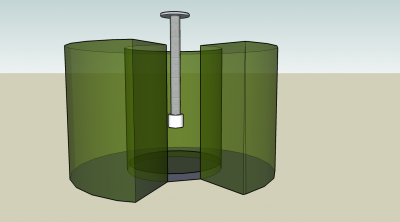Difference between revisions of "User:Joep/MudCurtain"
| Line 25: | Line 25: | ||
:Experiments needed. Possible solution: dividing the tubes into actual small bags. Disadvantages: A bit more costly; using solar energy is more difficult. (Maybe the top layer could be tubes, the rest being small bags?) | :Experiments needed. Possible solution: dividing the tubes into actual small bags. Disadvantages: A bit more costly; using solar energy is more difficult. (Maybe the top layer could be tubes, the rest being small bags?) | ||
| − | [[Category:RequirementComfort]][[Category:RequirementCost]][[Category:RequirementSafety]] | + | [[Category:RequirementComfort]][[Category:RequirementCost]][[Category:RequirementSafety]][[Category:Breakwater]] |
Revision as of 09:55, 4 June 2008
The machines that make plastic bags for potato chips, etc. can easily be adapted to create long tubes (which is a matter of not turning the tube into bags), filled with sand, water and air. (see User:Joep/Disposable land for actual cost and links, it's extremely cheap). Of course, these tubes can be sealed together to fill an area, and these can be stacked to create something like the green stuff in in this picture:
Now imagine a wave coming from the right, trying to reach the SeaStead. It would have to start lifting the whole wall of mud first. The water and sand in the tubes start moving towards the Seastead. At a certain moment the left of the tubes is filled completely and the wave has to lift the entire structure. Now here is what I think will happen: the wave gives up by moving to the sides. The remaining part of the wave will have to create a new wave within the curtain, and after that the spar design makes sure people will not even notice there even was a wave.
Some other advantages:
- during calmer days, there is some "land" around the SeaStead that can probably be used for something. One might even consider to live on it, being able to flee to the Seastead in case of bad weather.
- the water between the curtain and the Seastead is closed so it can be used for aquacultures without being afraid of fish escaping or diseases spreading to/from the sea.
- the same water is safer to swim in.
Disadvantages:
- It would be harder to connect two Seasteads; the wall would have to be rebuilt and moving one of the Seasteads is not really an option.
Other remarks:
- The tubes themselves will probably collect heat because of all of the moving water and sand, but I doubt it would be usable. The tubes at the top will collect considerable heat though (providing the Seastead is in a sunny area but that's of course requirement number one), possibly enough to make OTEC possible.
Why:
- the water between curtain and Seastead?
- the water in between acts as an extra stabilizer, similar to a boat in a swimming pool on top of a cruise ship that is more stable than the ship itself. (I guess).
Problems
- Potato bags are too weak to hold sand.
- Experiments needed. Possible solution: dividing the tubes into actual small bags. Disadvantages: A bit more costly; using solar energy is more difficult. (Maybe the top layer could be tubes, the rest being small bags?)
